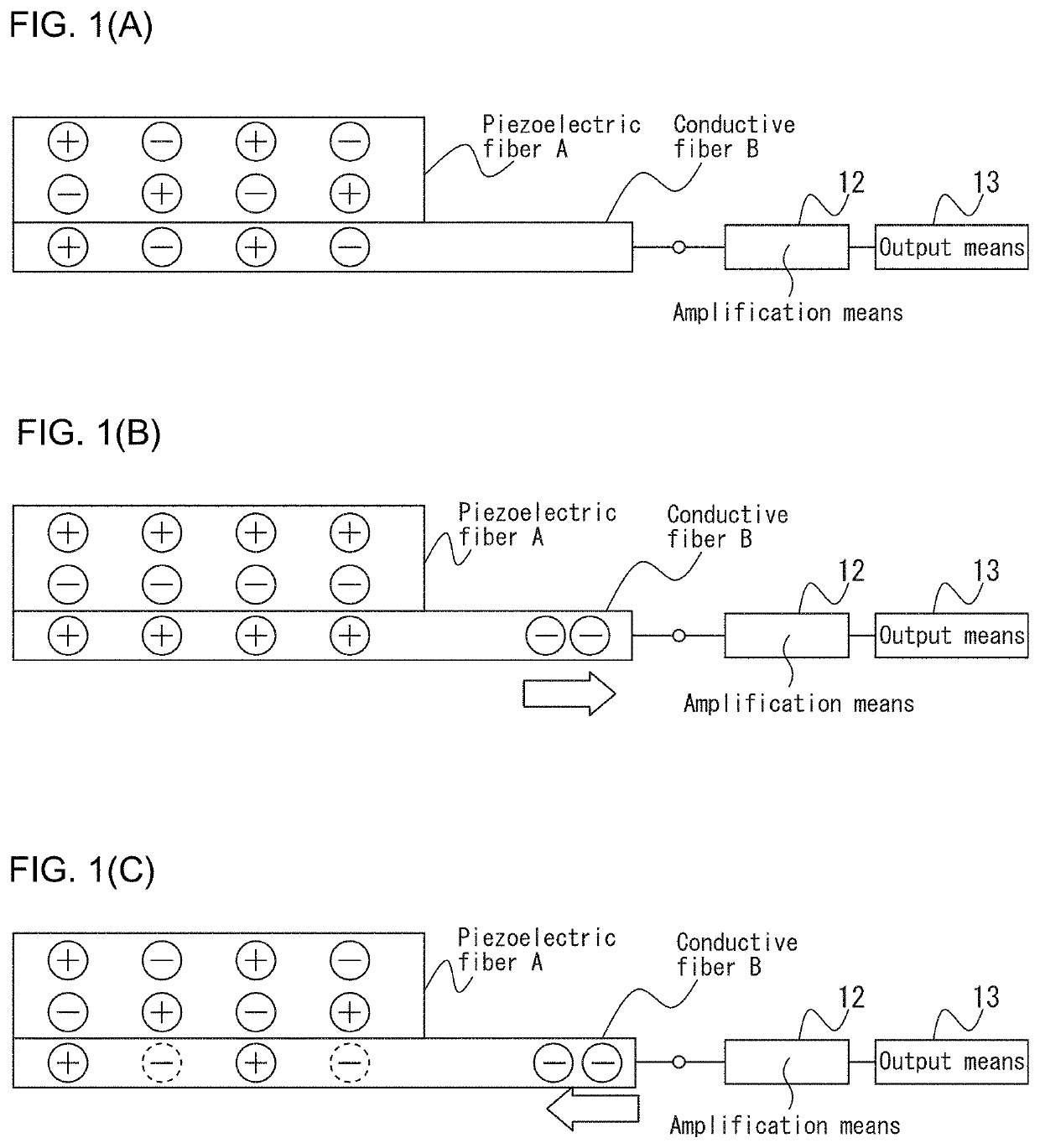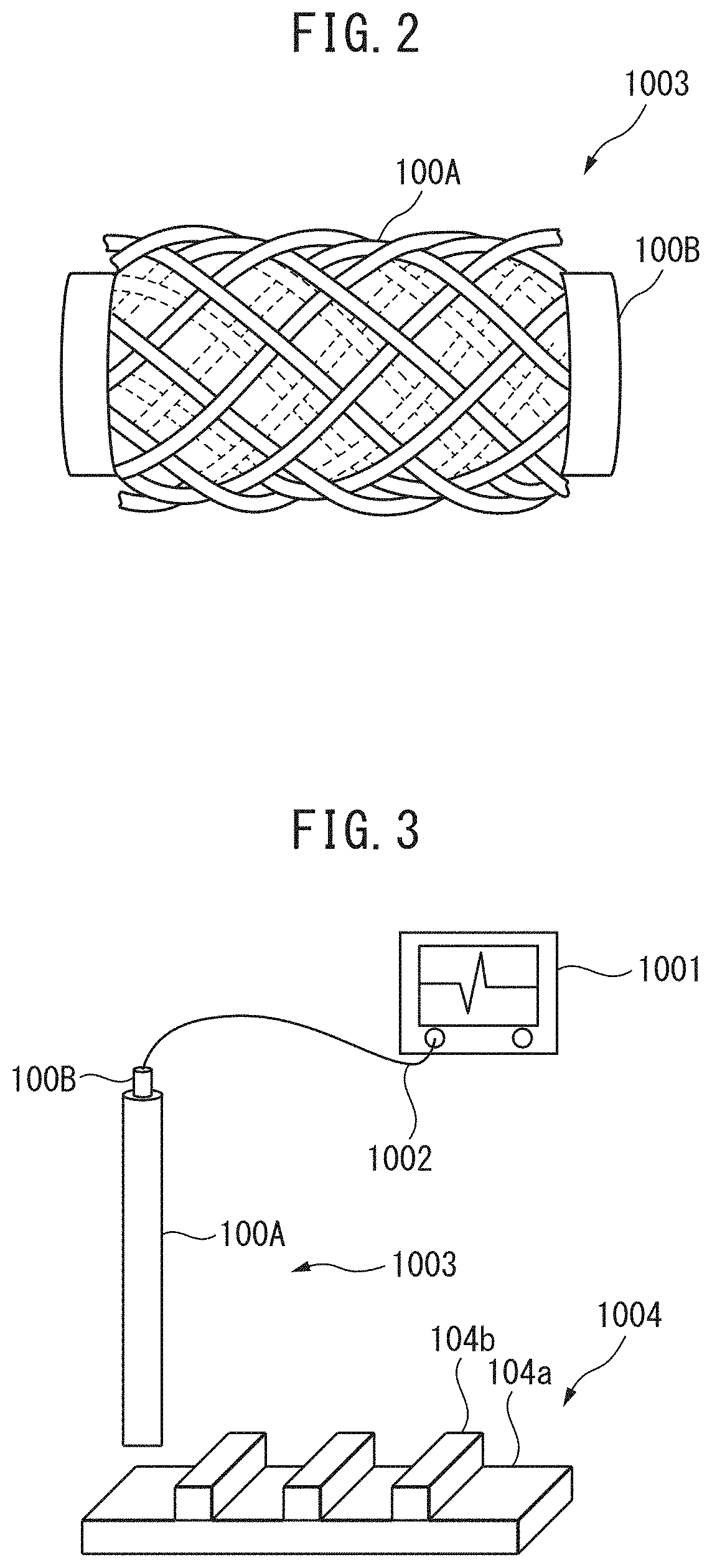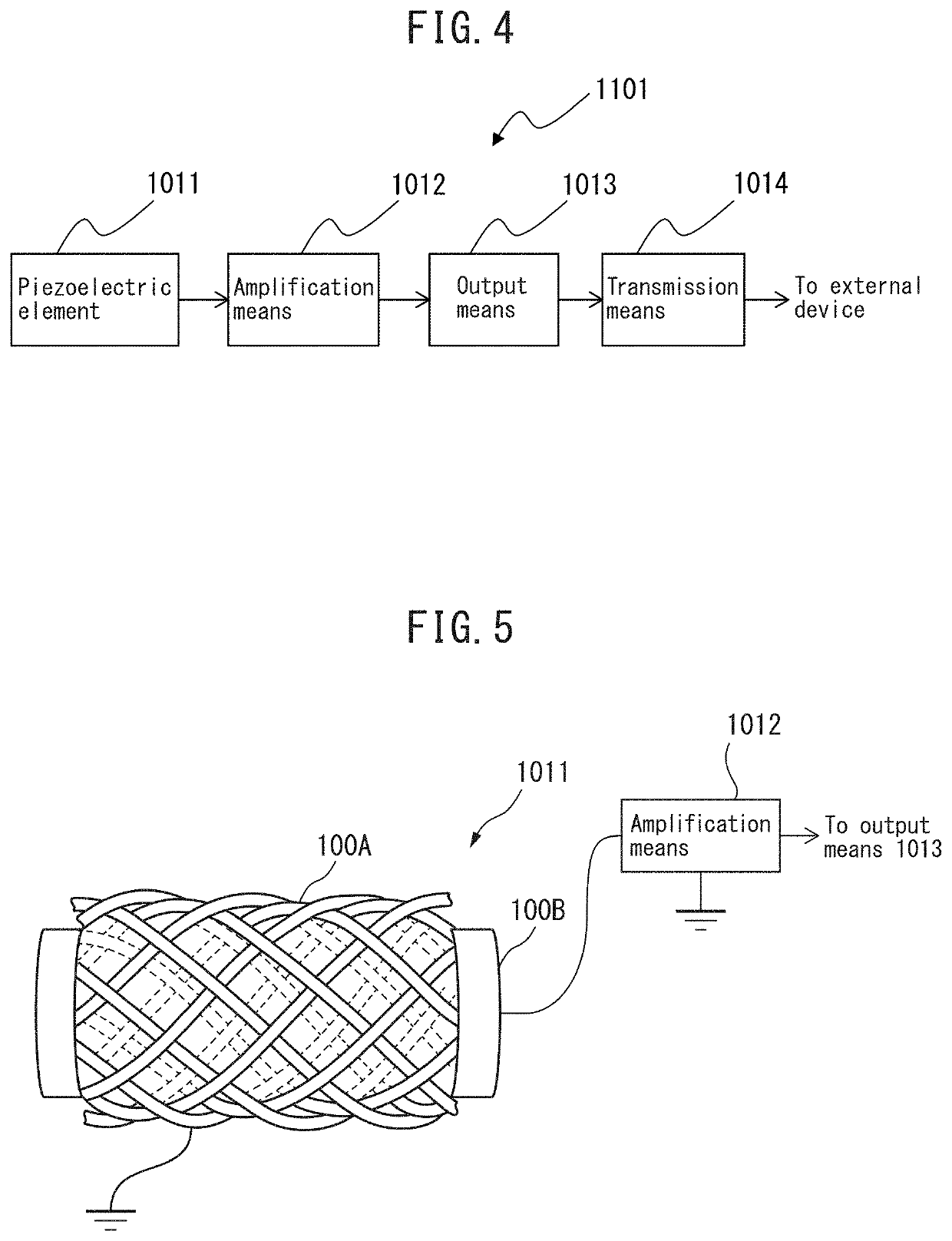Piezoelectric element and device using same
a piezoelectric element and piezoelectric fiber technology, applied in the field of fiberlike piezoelectric elements, can solve the problems of insufficient electrical output that cannot be obtained by tension or compression, no technology for generating and extracting sufficient electrical output, and extremely difficult to incorporate such a piezoelectric fiber element into a smartphone housing or the like, etc., to achieve the effect of suppressing noise signals, and extracting a large electrical signal
- Summary
- Abstract
- Description
- Claims
- Application Information
AI Technical Summary
Benefits of technology
Problems solved by technology
Method used
Image
Examples
example 1
[0663]By wrapping eight piezoelectric fibers 100A while knitting them with the conductive fiber 100B, a braided covered fiber 1003 with a 10 m-long tubular braid was obtained. The silver plated nylon fiber serving as the conductive fiber 100B in the covered fiber 1003 had a volume resistivity of 1.1×10−3 Ω·cm. Next, one end of the piezoelectric fibers 100A on the surface of the covered fiber 1003 was removed, leaving the conductive fiber 100B bare, to obtain a piezoelectric element. The piezoelectric element was evaluated its piezoelectric characteristic with the construction as shown in FIG. 3.
[0664]When the top of the measuring sample 1004 was traced with the piezoelectric element, different voltages were confirmed at the base plate 104a section and section where two plates 104a, 104b overlapped.
[0665]Also, the top of the measuring sample 1004 was rubbed 2000 times, and then the piezoelectric characteristic of the piezoelectric element was evaluated, but there was virtually no cha...
example 2
[0681]Using the conductive fiber 200B in the braided piezoelectric element 2001 as a signal wire, an oscilloscope (Digital Oscilloscope DL6000 Series “DL6000”, trade name of Yokogawa Electric Corp.) was connected through the wire via a 1000-fold amplification circuit. The braided piezoelectric element 2001 was bent 90 degrees in an electromagnetic shield box protected by a grounded (earthed) metallic gold net.
[0682]As a result, a difference in potential of approximately 100 mV was detected by the oscilloscope as the output from the braided piezoelectric element 2001, confirming that a sufficiently large electrical signal can be detected by deformation of the braided piezoelectric element 2001.
example 3
[0683]Using the conductive fiber 200B in the braided piezoelectric element 2001 of the fabric-like piezoelectric element 2005 as a signal wire, an oscilloscope (Digital Oscilloscope DL6000 Series “DL6000”, trade name of Yokogawa Electric Corp.) was connected through the wire via a 1000-fold amplification circuit. A conductive fiber 2008 of the weft threads of the fabric-like piezoelectric element 2005 was used as a grounding (earthing) wire for grounding. In this state, the fabric-like piezoelectric element 2005 was bent 90 degrees in the direction perpendicular to the braided piezoelectric element 2001.
[0684]As a result, a virtually noise-free electrical signal was obtained by the oscilloscope, as output from the braided piezoelectric element 2001 of the fabric-like piezoelectric element 2005, and a difference in potential of approximately 100 mV was detected. These results confirmed that it is possible to detect a sufficiently large electrical signal with low noise by deformation ...
PUM
| Property | Measurement | Unit |
|---|---|---|
| optical purity | aaaaa | aaaaa |
| winding angle | aaaaa | aaaaa |
| winding angle | aaaaa | aaaaa |
Abstract
Description
Claims
Application Information
 Login to View More
Login to View More - R&D
- Intellectual Property
- Life Sciences
- Materials
- Tech Scout
- Unparalleled Data Quality
- Higher Quality Content
- 60% Fewer Hallucinations
Browse by: Latest US Patents, China's latest patents, Technical Efficacy Thesaurus, Application Domain, Technology Topic, Popular Technical Reports.
© 2025 PatSnap. All rights reserved.Legal|Privacy policy|Modern Slavery Act Transparency Statement|Sitemap|About US| Contact US: help@patsnap.com



